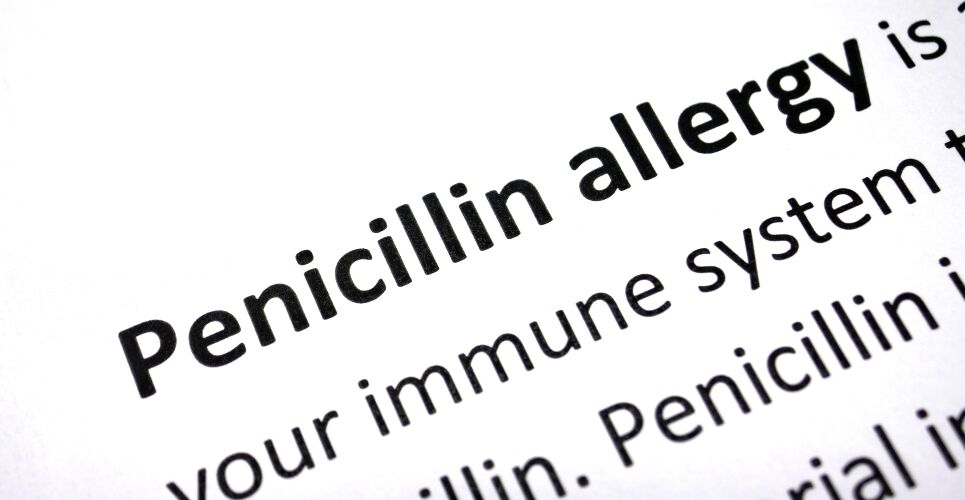Use of a direct oral penicillin challenge in patients with a low-risk of penicillin allergy has been shown to be non-inferior to the standard-of-care skin testing in the recent PALACE randomised trial.
Removing the label of being allergic to penicillin involves intra-dermal skin testing followed by an oral penicillin challenge. Now, an international research group has shown that a direct oral penicillin challenge in those with a low-risk penicillin allergy is equally as safe as the current standard-of-care assessment.
In the parallel, two-arm, non-inferiority, open-label, randomised trial, patients with a PEN-FAST score below three, were randomly allocated to either the intervention group who had a direct oral challenge with penicillin, or the control group who received the standard of care.
The primary outcome of interest was a physician-verified positive immune-mediated oral penicillin challenge within one hour after the intervention. Researchers set the non-inferiority margin as a risk difference of less than five on a one-sided 95% confidence interval.
Oral penicillin challenge
The trial recruited a total of 382 adults who were randomised, although only 377 patients with a median age of 51 years (65.5% female) were included in the final analysis. Among these, 187 were allocated to the intervention group. Most patients had a PEN-FAST score of 0 or 1.
The primary outcome occurred in only a single patient in both groups, giving a risk difference of 0.0084, which was below the non-inferiority margin.
In the five days following the oral penicillin challenge, a total of nine immune-mediated adverse events were recorded in the intervention group and 10 in the control group. None of these were deemed to be serious.
Dr Ana-Maria Copaescu, first author of the study and associate investigator in the Infectious Diseases and Immunity in Global Health Program at the Research Institute of the McGill University Health Centre in Quebec, said: ‘The biggest takeaway from the PALACE study is that patients with a low-risk penicillin allergy, like a childhood rash, can safely have a test dose of penicillin to determine if they are still allergic.
‘This will change the way doctors test for penicillin allergy in the future. Millions of patients worldwide… will be able to have their penicillin allergy disproved by a safe single oral test dose following a carefully risk-validated risk assessment.‘
Antibiotics such as penicillin are widely used in clinical practice although a true allergy to these drugs is rare with an estimated frequency of anaphylaxis at one to five per 10,000 cases. Hypersensitivity reactions are significantly more common, resulting in symptoms such as nausea, vomiting, pruritus, urticaria and wheezing.

